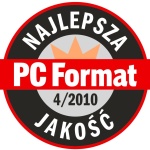Kaspersky Lab, a leading developer of secure content management solutions, announces that Kaspersky Internet Security 2010 romped to victory in comparative testing conducted by the respected Polish IT magazine PC Format
 Kaspersky Lab, a leading developer of secure content management solutions, announces that Kaspersky Internet Security 2010 romped to victory in comparative testing conducted by the respected Polish IT magazine PC Format.
Kaspersky Lab, a leading developer of secure content management solutions, announces that Kaspersky Internet Security 2010 romped to victory in comparative testing conducted by the respected Polish IT magazine PC Format.
Detailed results of all the security suites tested were announced in issue no. 4/2010 of the magazine. The magazine’s experts put 10 of the leading Internet Security software products available on the Polish market through their paces. The test looked at how each product made use of system resources during on-access and on-demand scanning, as well as each product’s operational stability, functionality and effectiveness at detecting malware.
Kaspersky Internet Security 2010 took the ‘Best Quality’ title, overshadowing, amongst others, Norton Internet Security 2010, G Data Internet Security 2010 and ESET Smart Security 4. Some of the features of Kaspersky Internet Security 2010 that particularly impressed PC Format‘s experts were the product’s outstanding effectiveness, its Safe Run mode, its ability to block advertisements, its advanced parental control system and its advanced web-monitoring capabilities.
“Kaspersky Internet Security 2010’s success is down to the product’s large number of available features. The program has everything a user could require, and more. It provides excellent protection for Internet browsers," wrote PC Format’s Editor, Bartlomiej Mrozewski. "Not only do filters check every website visited for potential threats, but the Internet browser can be run from inside the sandbox, isolating it entirely from the operating system.”
Safe Run mode is just one of the innovate features inside Kaspersky Internet Security 2010 and is based on new Sandbox technology – which is unique among Internet Security Suites. Safe Run mode enables the user to run suspect software in an isolated, virtual environment that protects the operating system against all types of malicious damage. Statistically, it has been demonstrated that vulnerabilities in operating systems and trusted applications are often exploited by hackers to attack applications that make use of the Internet.
